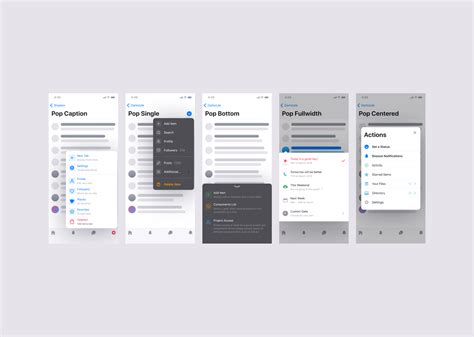The advent of the Popover API marks a significant milestone in web development, offering developers a standardized way to create interactive and visually appealing popovers. With the ability to seamlessly display popover content on top of existing page elements, this API revolutionizes user interface design by providing a flexible and consistent mechanism for presenting contextual information.
One noteworthy aspect highlighted by comments is the potential impact on accessibility. Developers lauded the API for streamlining the creation of accessible popovers, ensuring better support for users navigating websites using assistive technologies. By eliminating the need for complex JavaScript solutions, the Popover API simplifies the implementation of interactive elements while maintaining accessibility standards.
Feedback from users suggests a strong demand for native support for popovers, emphasizing the widespread utility of this feature and the desire to reduce reliance on third-party libraries. The convenience offered by the Popover API in enhancing layouts and interactions within web applications underscores its value in improving both efficiency and user experience.
Moreover, discussions surrounding the integration of CSS Anchor Positioning with the Popover API hint at future advancements in web design. The synergistic potential of these technologies promises to unlock novel capabilities, such as custom tooltips and context menus, in a declarative and accessible manner. This convergence opens up avenues for creating sophisticated web interfaces with ease.
The Popover API not only addresses the need for standardized popover functionality but also aligns with the industry’s push towards more native solutions in web development. By providing a built-in mechanism for creating popovers, developers can enhance consistency across applications and reduce the reliance on external dependencies.
With ongoing developments in browser support and the imminent adoption of CSS Anchor Positioning, the Popover API is set to play a pivotal role in shaping the future of user interface design. The collaborative efforts of browser developers, standards bodies, and the developer community bode well for the continued evolution of web technologies.
In conclusion, the Popover API represents a significant advancement in modern web development, offering a convenient and accessible solution for creating interactive popovers. As the tech industry embraces native features for user interface components, the adoption of the Popover API signals a shift towards more efficient and user-friendly web experiences.
As the Popover API gains traction and garners positive feedback from developers and users alike, its influence on web design trends and best practices is expected to grow. The seamless integration of popovers into web applications signifies a step towards more cohesive and accessible digital experiences, enhancing usability and user engagement across various platforms.


Leave a Reply